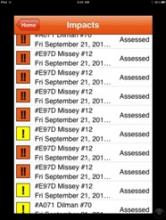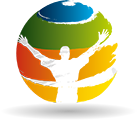
Question: So is this where impact sensors are useful: because their use may help improve the early identification of concussed athletes?
Answer: Exactly. Impact sensors don't depend solely on athletes to remove themselves from games or practices by reporting concussion symptoms, or on game officials or sideline personnel to observe signs of concussion. By monitoring head impact exposure in real time, sensors give sideline personnel an additional tool to identify high-risk impacts so they can consider performing a concussion assessment, or, alerted to the fact that an athlete has sustained a heavy hit, can watch them more closely for concussion signs. In a very real sense, sensors are another set of "eyes" watching for concussed athletes.
Question: I have heard that impact sensors diagnose concussions. Is that true?
Answer: No. It needs to be absolutely clear that impact sensors do not diagnose concussion, and should not be used for that purpose. This is because concussion researchers have not yet found the impact threshold above which concussion is highly likely. (Indeed, because the impact forces that result in concussion vary from athlete to athlete, are likely affected by numerous variables, and indeed may change from moment to moment, game to game, and over time, it may be that such an impact threshold - appropriately labeled by some researchers as the concussion "holy grail" - will never be found. )
Because impact sensors are not diagnostic, a team equipping its players with sensors must be careful not to rely on the data transmitted by the sensors, or the triggering of an alert or alarm, as in any way determinative of whether an athlete has or has not suffered a concussion. Nor are they designed to make any type of recommendation about the ability of a player to play or not play.
As Danny Crossman, CEO of Impakt Protective, the Canadian company that manufactures the Shockbox sensors featured in the "The Smartest Team," notes, "The main point of the helmet sensors [i]sn't to say, 'You got a concussion.' The point [i]s to say, 'That head took a hit. ...[The athletic trainer] can then use his training, intuition, and his eyes, number one tool is his eyes, to say ‘what just happened there?'"
Question: Then, if the mantra in concussion management is "When in doubt, sit them out," and the laws of almost every state require that all athletes suspected of having suffered concussions not only be removed from the game or practice in which they are participating, but be barred from returning until a health care professional with concussion expertise has given them written approval to do so, why can't a program that employs impact sensors simply dispense with the need for a sideline "remove from play" concussion screening? In other words, if the sensor goes off, isn't that enough of a reason to suspect that the player has suffered a concussion so as to bar further participation?
Answer: First, of all impact sensors are not intended to replace sideline observers, game officials, coaches, and teammates. They still need to be present and ever-vigilant about watching for signs of concussion or heavy hits that could cause concussion. If they have any reason to suspect a concussion (whether because they see an athlete exhibiting concussion signs or because he or she took a high impact hit), then they need to conduct a sideline screening for concussion using one or more of a battery of assessment tools already shown by studies to be reliable in making the initial remove-from-play decision (eg. Standardized Assessment of Concussion or "SAC", Sport Concussion Assessment Tool Version 3 or "SCAT3", Balance Error Scoring System or "BESS", King-Devick Test, and/or " Maddocks" questions) or one of a number of new assessment screens being developed and tested.
The critical point to always keep in mind about Impact sensors is that they are just another tool in the concussion toolbox or, put another way, another set of eyes, with which to identify athletes who (a) may have sustained impacts of sufficient magnitude that (b) may have resulted in some cases in concussions, so that they (c) may be monitored for signs of concussion or (d) may be asked to undergo a balance, vision, and/or neurocognitive test on the sidelines, the results of which (e) may suggest a removal from play for the remainder of the game and referral to a concussion specialist for formal evaluation away from the sports sideline, which (f) may result in a clinical diagnosis of concussion.
Question: Isn't this all marketing hype from the manufacturers of impact sensors? What do independent experts in the identification and management of sports-related have to say about the use of impact sensors in the way you describe? Do they see benefits?
Answer: Yes, independent experts absolutely see benefits to using impact sensors now. Here are what they see as the major benefits:
- Sideline personnel responsible for keeping players safe will benefit from objective data that might inform their medical decisions. They say that identification of a potentially injurious impact or series of impacts via real-time monitoring of head impact exposure in athletes may not only facilitate the early recognition and management of brain injury in helmeted sports, but permit early intervention, potentially in advance of an injury, rather than simply as a management tool postinjury. Sensors give them the ability to monitor impacts during the course of an athletic event for the purpose of screening for potential injury. Although an on-board accelerometer system may not be able to accurately predict injury, it may have utility as a screening device by alerting sideline personnel of an impact that has occurred above a predetermined magnitude, thus triggering either observation or a sideline concussion assessment of an athlete.
- Parents and coaches will benefit from reduced reliance on honest self-reporting of concussion symptoms by athletes and of the less-than-perfect observational skills of sideline management in spotting signs of concussion;
- Teams will benefit by having healthy, unimpaired athletes on the field more often;
- Student-athletes will benefit the most from reduced exposure to potentially injurious blows and from what one calls the "conundrum of having to self-report an injury that they may not recognize as being potentially injurious or dangerous in the moment of competition," or, as recent studies suggest, athletes know are potentially dangerous but choose not to report because they fear being punished by the coach for doing so, such as by removing them from a starting position, reducing future playing time, or inferring in front of teammates that reporting symptoms made them "weak"; and
- Doctors and researchers will benefit from real-time monitoring because it will allow for accurately cataloguing the number of hits and post-impact head acceleration being experienced by an athlete over time. With millions of data points, the scientific community may ultimately able to establish a so-called "hit count" above which there is an unacceptably high risk that the athlete, by continuing to play, may suffer permanent brain damage due to the cumulative effect of repetitive subconcussive impacts, up to and including the remote possibility of developing CTE.
- It is important to note, however, that, as one prominent concussion researcher noted in a 2013 study in the prestigious American Journal of Sports Medicine, the concept of a hit count "is fairly new and, as yet does not have published data to suggest that any particular level or number of hits has significant clinical meaning for any particular sport or position. Nonetheless, individual athletes may feel there is a benefit to having an estimate of forces their brain experiences over time."
- Likewise, the new IOM/NRC report on youth sports concussionsm, while noting that "the concept of limiting the number of head impacts is fundamentally sound," found that implementing a specific threshold for the number of impacts or the magnitude of impacts per week or per season was "without scientific basis."
Question: Are there any other practical uses for sensors?
Answer: Yes, a number of top concussion researchers also believe that real-time monitoring of impacts could help reduce the total amount of brain trauma from repeated subconcussive blows by identifying athletes sustaining a large number of such hits due to improper blocking or tackling technique. In a recent article on SI.com, Kevin Guskiewicz, PhD, ATC., Kenan Distinguished Professor and Director of the Matthew Gfeller Sport-Related Traumatic Brain Injury Research Center at The University of North Carolina at Chapel Hill, said sensors are helping coaches and other personnel at UNC identify athletes who are sustaining a high number of high force impacts, especially to the top front of their helmets that appear to be the most worrisome from a brain trauma standpoint, as a result of poor tackling or blocking technique. "If a player is observed repeatedly sustaining larger impacts to the crown of his head," he told SI, "coaches will work with him on adjusting his technique," said Guskiewicz.
Using impact sensors as a teaching tool isn't just happening at the college level. It is happening in high school football, too. After Purdue researchers found that high school football linemen who sustained a high number of high impact sub-concussive hits over the course of a season were the ones suffering impairment of their visual memory, the information led at least one player to change his blocking technique.
As Tom Talavage, the lead author of the Purdue study, told Frontline in a 2011 interview, he thought at least 50 percent of the high impact hits linemen and linebackers were sustaining were due to poor technique. "Some of the players that we have on our team have not very good technique, to be quite honest. And what you'll find is, they will launch into a play, and they will lead with their helmet. Other players will more correctly keep their head up, try to get their arms up as a blocking technique, or when they're rushing, they will try to get their arms up as a means to push the offensive lineman out of the way. Those technique differences lead to a very large difference in the total number of blows experienced and where those blows are experienced on the head."
Talavage said that when one of the offensive lineman who was found to have been functionally impaired after sustaining a high number of subconcussive blows, impairment that persisted beyond the season, decided to change his technique, he experienced a drastic reduction in the number of blows he experienced to the top front of his head and a moderate reduction in the total number of blows.
The result was that, after the second season, "his neurocognitive testing never detected any deficits, and from an imaging perspective we saw substantially less change in his fMRI activity. There's still some, because he's still getting hit, but his technique changed the distribution."
Research suggests that the cumulative effect of subconcussive impacts increases the risk of long-term neurodegenerative diseases such as CTE, PD, AD, MCI and ALS. While researchers continue to look for the concussion "holy grail" in the form of specific impact thresholds above which concussions are highly likely and/or the number of impacts or the magnitude of impacts per week or per season that substantially increase the risk of long term brain injury, impact sensor technology is available right now to help reduce total brain trauma by using impact data to identify kids who need more coaching so they can learn how to tackle and block without using their helmets.



